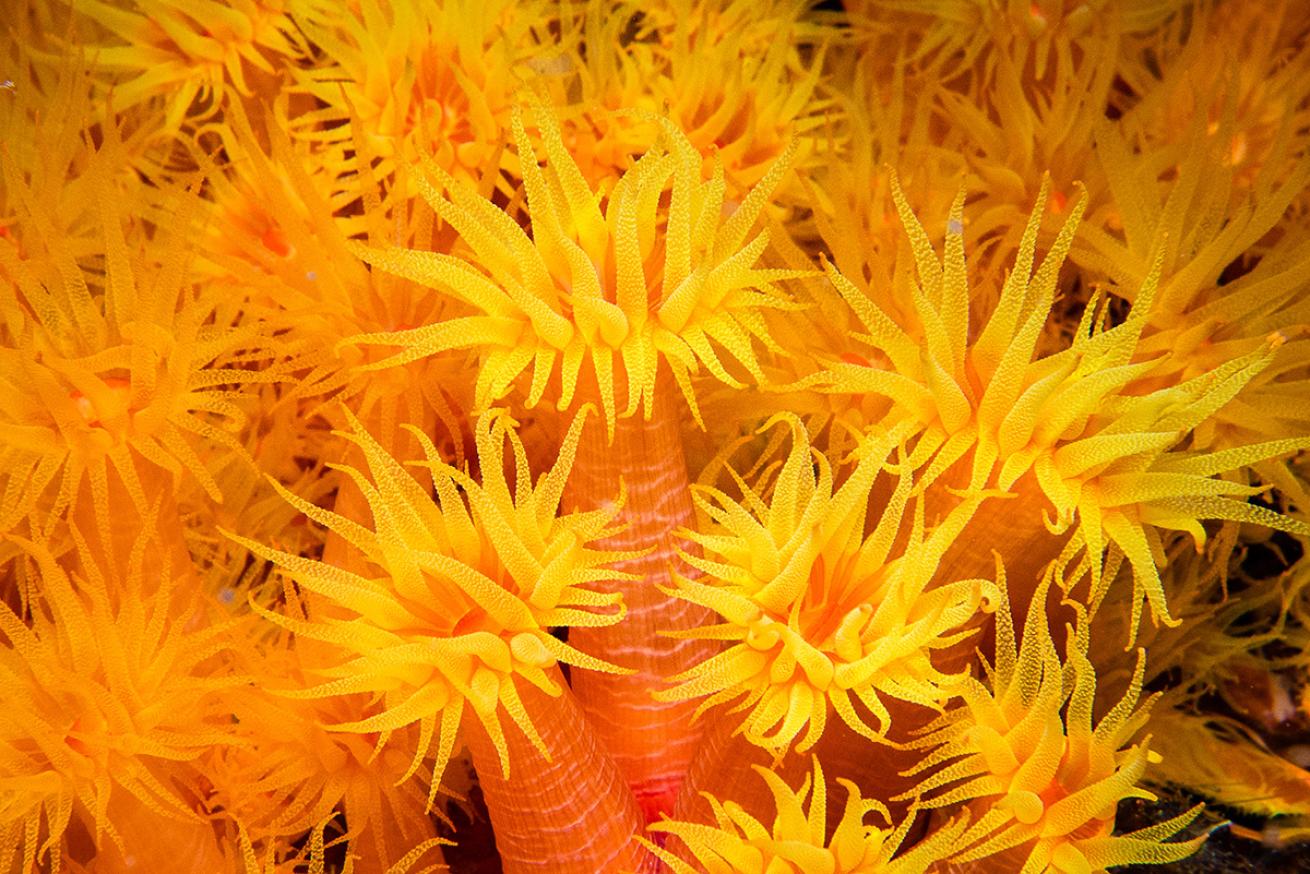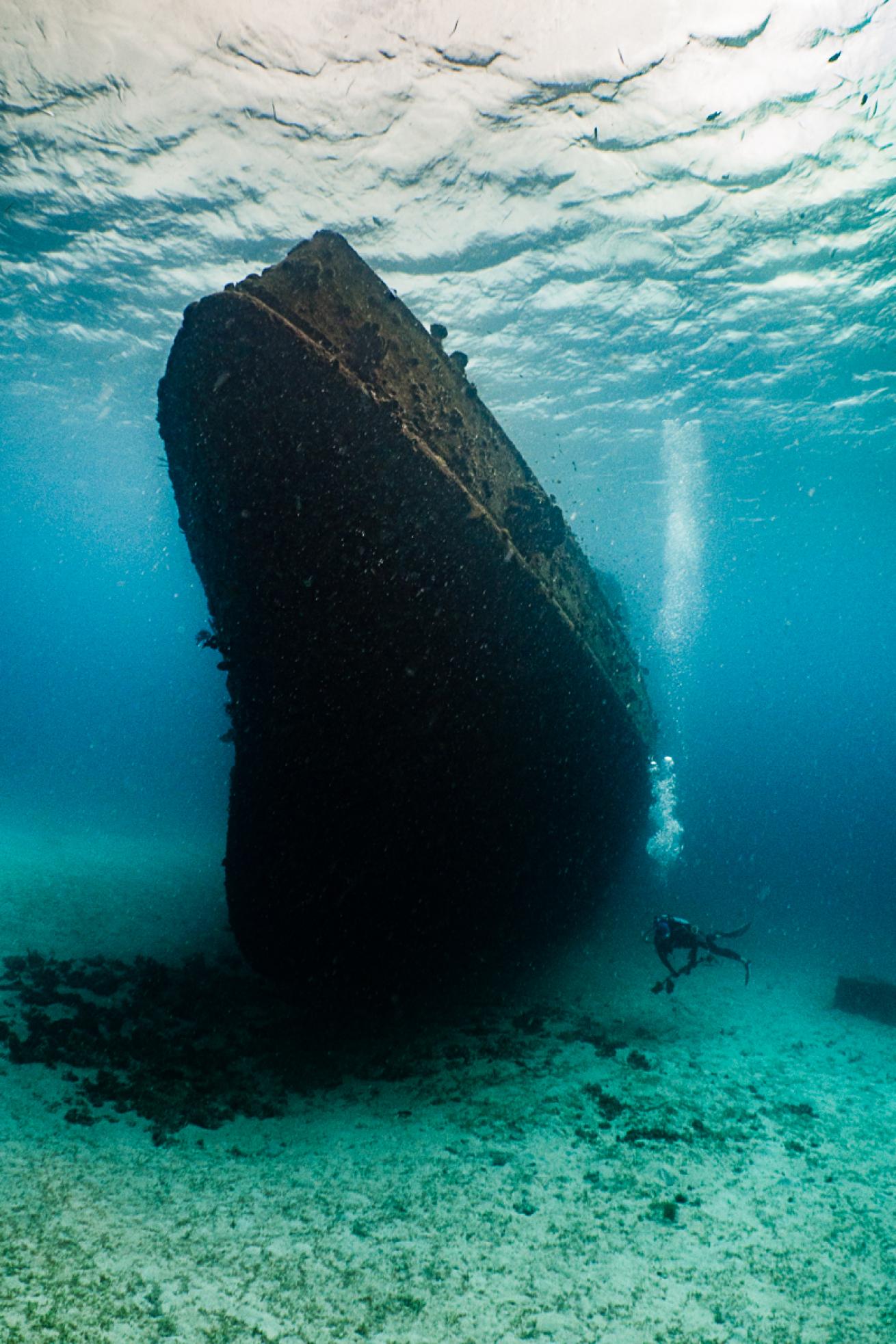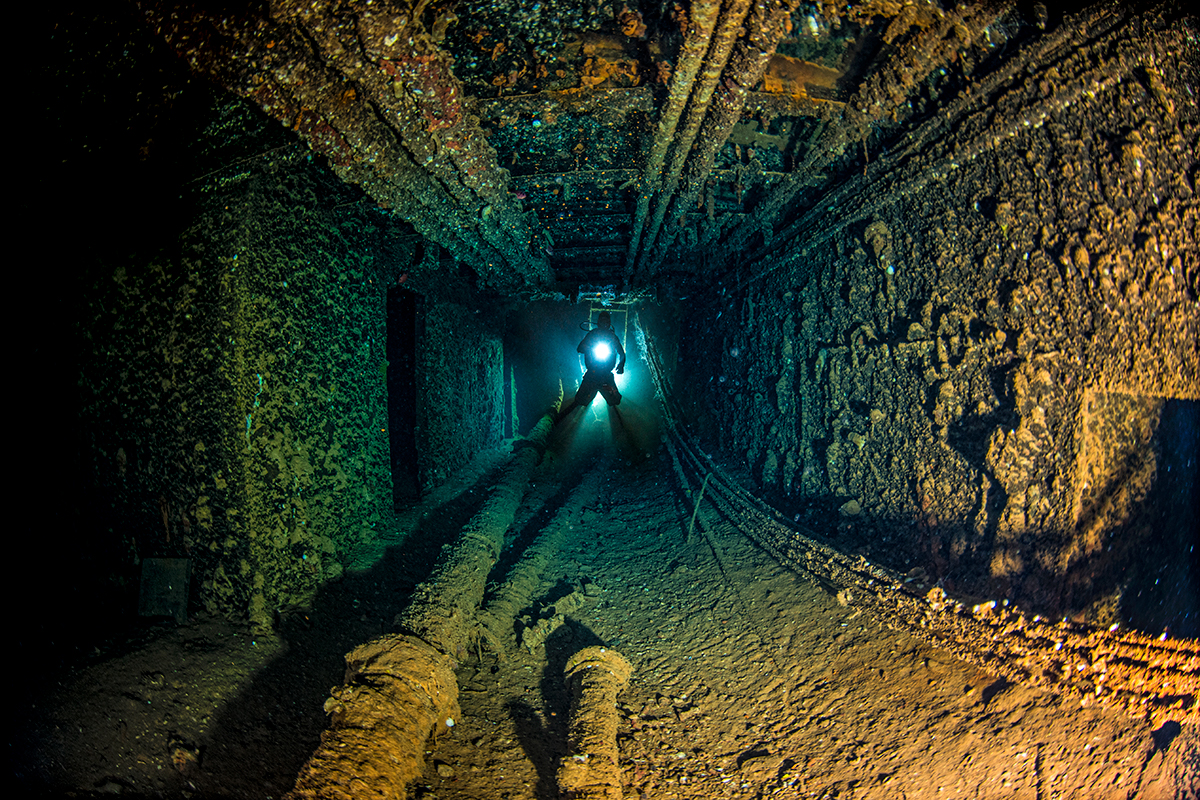Night Diving the Wrecks of Barbados

Henrietta Honnor PassosInvasive cup coral dance in brilliant colors on the Bajan Queen.
The night is still hot on the beach. Heat rises off the sand of Carlisle Bay like steam escaping freshly baked bread. Sand that absorbed the heat of the day and is finally giving it back. We can still hear the beat of the beach bars, but the music quietens as we approach the water. The water is lukewarm, almost the same temperature as my body, like a bathtub left to cool too long. The surface of the sea is smooth like liquid glass. I slip into the Atlantic. Although the waters of Barbados are considered Caribbean, it sits so far east it’s actually no longer in the Caribbean Sea at all.
On a shore dive, it’s hard to wade out without looking like a pregnant hippo. The gear is cumbersome, you can overbalance in flippers—the proverbial fish out of water. Best to shuffle backward. It’s such a stark contrast to the graceful motion of scuba diving, where every slow movement is connected to the last. As soon as you’re in the water, weightlessness takes over.
This is not lost on us, so we sink down and start swimming, even before it’s deep enough. Our fins kick the bottom. Our knees hit the sand. Then, suddenly, we’re below.
There's a mini thrill on a night dive, a fear of the inky ocean and what could be underneath. You can only see what you shine your torch on, and only hear the robotic hiss of the regulator as bubbles brush your face. Sleeping fish hang in mid-water. It's a mind game. Calm your mind, focus your breath.
We brave the dark water, face the unknown.
There are a number of wrecks in the Carlisle Bay Marine Park, all fairly close to shore. The first one we reach is the oldest. The Berwyn was a French tugboat reputedly scuttled in 1919 by her own crew refusing to leave Barbados and rejoin the war effort. With over 100 years of coral growth, she is a haven for fish and turtles. The 70ft long structure is quite open, like a bathtub with a wide brim. As it sits at 20 feet on the bottom (and only 10 feet below the surface) it’s shallow enough for snorkelers. By day it teems with fish and tourists. At night it’s abandoned.
A short distance away lies the Bajan Queen, purposely sunk in 2002 to 35 feet deep. Originally named the Pelican, she was Barbados’ first tug boat. She then served as a party boat entertaining thousands of tourists in the sunset of her retirement. At her final resting place, the Bajan Queen is now enjoyed by underwater visitors instead.

Henrietta Honnor PassosPurpose sunk in 2002, the Bajan Queen rests 35 feet deep.
Our headlamps throw beams on the 120-foot-long hull like robbers in the night. Bubbles from torchlight look like binary codes. Invasive cup coral covers the underside in brilliant colors like flowers in a botanical garden. During the day you wouldn’t know the cup coral was there, as it closes up into a dull pink ball, but at night the Indo-Pacific blooms in heartbreaking beauty.
Swimming down the starboard side of the Bajan Queen, we can see a toilet still fastened to the bathroom floor. One diver finds a sleeping eel inside the bowl and motions us to take a look. The moving water and lights wake the creature who, with a shot of adrenaline, slithers past us into the night.
He isn’t the only thing a little freaked out. Calm yourself, slow your breathing, I think. Don't suck all the air in your tank.
As I calm, growing ever more comfortable with the dive, something changes. The freedom of movement in a 3D space, the warmth of the water, the constant sound of breathing in and out mesmerizes me. Suddenly the water didn’t feel like water at all. I moved my hand past my face, just to make sure. I don’t feel wet. I feel like I’m floating in space.
Our beams hit a lionfish hanging in mid-water. Another beautiful invasive species, local fishermen are actively encouraged to catch them. They are tasty, but hunting isn’t allowed in the protected Carlisle Bay Marine Park.
Turning our flashlights homeward, our final wreck is the Cornwallis, a freighter with a storied past. The Caribbean buzzed with activity during WWII as Germany tried to thwart Allied petroleum supply lines from Trinidad and Venezuela. In 1942, a U-boat torpedoed the anti-submarine nets over Carlisle Bay, snuck into the harbor and sank the Cornwallis before escaping back through the shattered net. The 39-foot freighter was moved to the marine park in 2003 where she rests at a depth of 15 feet.
Just like everything else about this night dive, ascending is different from my normal dives. Typically, the slow ascent is vertical, sealed with a safety stop. But that’s not necessary on a short dive. We swim to shore on the bottom of the ocean, and, by definition, gently ascend to the surface.
We emerge slowly, leaving behind the elegance of the dive, the rhythm of our regulators, the tickle of the bubbles, the sleeping fish. But the thrill of danger lingers, delicious.











